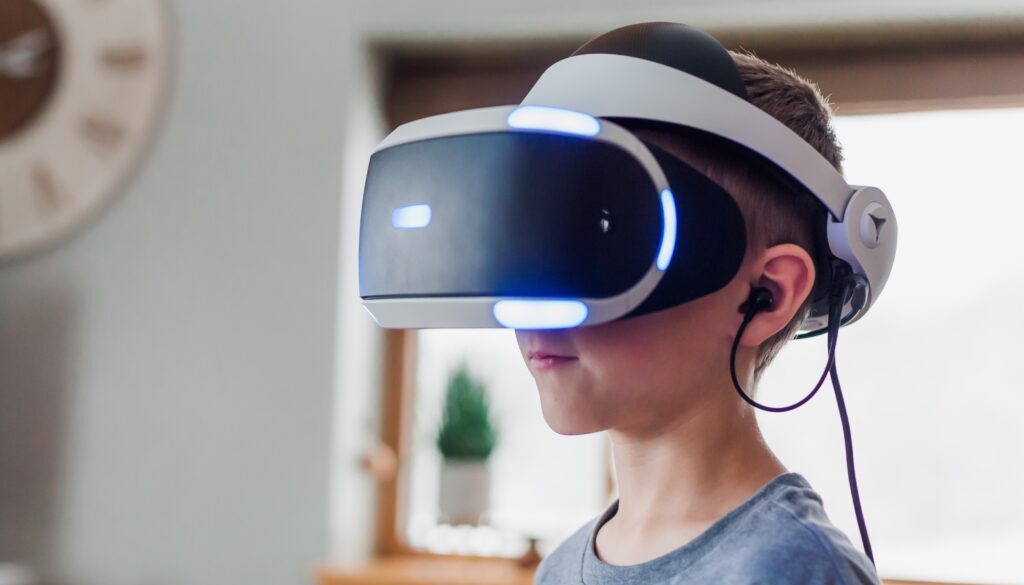Introduction
The digital landscape is constantly evolving, and with the advent of augmented reality (AR) and virtual reality (VR). We find ourselves at the forefront of a revolution in user interaction. These immersive technologies are reshaping how we perceive and interact with the digital world. This blog delves into the captivating realm of augmented and virtual reality user interfaces. Exploring how these interfaces are redefining interaction, their impact across industries, design principles, challenges, and the exciting future they hold.
Redefined Interaction through Immersion
Traditional user interfaces have primarily relied on screens and clicks, but AR and VR introduce a whole new dimension of interaction—immersiveness. AR overlays digital elements onto the real world, enhancing our perception of reality, while VR transports us to entirely virtual environments. This shift from external interaction tools to an internal, experiential approach is transforming how we engage with digital content.

AR and VR Across Industries
- Education and Training: AR and VR enable hands-on learning experiences. Medical students can practice surgeries virtually, architects can walk through buildings before construction, and employees can undergo immersive training simulations.
- Gaming and Entertainment: VR gaming takes players into the heart of their favorite games. While AR enhances real-world settings with interactive elements, creating unique gaming experiences.
- Retail and Marketing: AR enhances retail experiences by allowing customers to visualize products in their real environment before purchase. Brands also use AR for interactive marketing campaigns.
- Healthcare: VR is being used for pain distraction during medical procedures, exposure therapy for treating phobias, and cognitive rehabilitation.
- Design and Architecture: Architects and designers use VR to create immersive walkthroughs of designs, enabling clients to experience spaces before construction begins.

Designing AR and VR Interfaces
- User-Centered Design: Creating AR and VR interfaces requires a deep understanding of user behaviors and needs in immersive environments.
- Minimalism: Due to limited screen space in AR, and the need to prevent sensory overload in VR, interface elements are often minimal and strategically placed.
- Spatial UI: In VR, interfaces are placed in three-dimensional space, requiring users to interact with objects physically, enhancing the sense of immersion.
- Gesture and Voice Interaction: AR and VR interfaces make use of gestures and voice commands for a natural and intuitive interaction experience.

Challenges and Considerations
- Motion Sickness: VR can cause motion sickness due to conflicts between visual and vestibular cues. Designers must strive to minimize discomfort.
- Hardware Limitations: The effectiveness of AR and VR interfaces is heavily dependent on the capabilities of the devices and hardware used.
- Accessibility: Ensuring that AR and VR interfaces are accessible to individuals with disabilities is a challenge that designers need to address.
The Future: Where Do We Go From Here?
- Mixed Reality (MR): MR merges real and virtual worlds seamlessly, allowing users to interact with both. This could be the next step in interface evolution.
- Haptic Feedback: Integrating haptic feedback technology can enhance the sense of touch in virtual environments.
- Neuro-Interfaces: Direct brain-computer interfaces could enable thought-based interaction with AR and VR, blurring the line between the physical and digital.
- Mass Adoption: As hardware becomes more affordable and accessible, AR and VR interfaces are likely to become integral parts of our daily lives.

Conclusion
The future of interaction is unfolding before our eyes through augmented and virtual reality user interfaces. These immersive technologies are pushing the boundaries of how we engage with digital content and transforming industries across the board. As designers, developers, and creators continue to explore the potential of AR and VR, we can anticipate a future where the line between the physical and digital worlds is blurred, and interactions become even more immersive, intuitive, and transformative. The journey has just begun, and the future of interaction is an exciting realm of endless possibilities.




